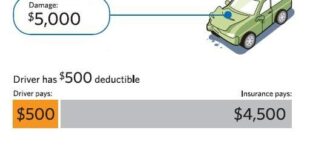High Risk Car Insurance: Understanding Coverage Options. High risk car insurance is essential for drivers with less-than-perfect records. Whether you have a history of traffic violations, accidents, or lapses in coverage, understanding high risk car insurance can help you find the best coverage options. This article will explore the ins and outs of high risk car insurance, from understanding what qualifies as high risk to tips on reducing premiums and frequently asked questions.
What is High Risk Car Insurance?
High risk car insurance, also known as non-standard auto insurance, is designed for drivers who are considered more likely to file claims due to their driving history or other factors. Insurance companies categorize drivers as high risk based on several criteria, including:
- Multiple traffic violations or accidents
- DUI or DWI convictions
- Poor credit history
- Lapses in insurance coverage
- Young or inexperienced drivers
Why You Might Need High Risk Car Insurance
If you fall into one of the categories mentioned above, standard insurance companies may either deny coverage or charge exorbitant premiums. High risk car insurance provides a solution, ensuring you remain legally compliant and protected on the road.
Factors Influencing High Risk Car Insurance Rates
Several factors can influence the cost of high risk car insurance, including:
- Driving Record: More violations or accidents typically lead to higher premiums.
- Credit Score: Poor credit can indicate higher risk, increasing insurance costs.
- Age and Experience: Young and inexperienced drivers often face higher rates.
- Vehicle Type: High-performance or luxury vehicles can lead to higher premiums.
- Location: Urban areas with higher accident rates can result in increased premiums.
How to Find Affordable High Risk Car Insurance
Finding affordable high risk car insurance requires research and strategy. Here are some tips to help you secure the best rates:
- Compare Quotes: Shop around and compare quotes from multiple insurers.
- Improve Driving Record: Take defensive driving courses and avoid traffic violations.
- Bundle Policies: Combine auto insurance with other types of insurance for discounts.
- Increase Deductibles: Opt for higher deductibles to lower premiums.
- Maintain Continuous Coverage: Avoid lapses in coverage to prevent rate increases.
- Use a Specialized Broker: Brokers specializing in high risk insurance can find better deals.
- Check for Discounts: Look for discounts like safe driver, low mileage, or vehicle safety features.
- Pay in Full: Paying your premium annually can often result in a discount.
- Consider Usage-Based Insurance: Some insurers offer discounts based on driving behavior monitored through a telematics device.
- Review Policy Regularly: Reassess your policy annually to ensure you have the best rates and coverage.
Tips for Reducing High Risk Car Insurance Premiums
- Maintain a Clean Driving Record: Avoid traffic violations and accidents.
- Take Defensive Driving Courses: Many insurers offer discounts for completing approved courses.
- Improve Your Credit Score: Better credit can lead to lower insurance rates.
- Choose a Safer Vehicle: Opt for vehicles with high safety ratings and lower repair costs.
- Limit Mileage: Driving fewer miles can reduce your premium.
- Install Safety Features: Equip your car with anti-theft devices and other safety features.
- Raise Your Deductible: A higher deductible can lower your premium.
- Bundle Insurance Policies: Combine auto and home insurance for a discount.
- Avoid Lapses in Coverage: Continuous coverage helps maintain lower rates.
- Shop Around Annually: Regularly compare rates to find the best deal.
Frequently Asked Questions about High Risk Car Insurance
- What makes a driver high risk?
- Drivers with multiple violations, accidents, DUI/DWI convictions, poor credit, or lapses in coverage are often considered high risk.
- Can high risk drivers get standard insurance?
- While possible, high risk drivers typically face higher premiums or may be denied coverage by standard insurers.
- How can high risk drivers lower their premiums?
- Improve driving records, take defensive driving courses, and maintain continuous coverage.
- Are there discounts available for high risk car insurance?
- Yes, discounts for safe driving, low mileage, and vehicle safety features may be available.
- How does credit score affect car insurance rates?
- Insurers often use credit scores to assess risk; a poor score can result in higher premiums.
- What is a non-standard auto insurer?
- Non-standard insurers specialize in providing coverage for high risk drivers.
- Can young drivers be classified as high risk?
- Yes, young and inexperienced drivers often face higher rates and may be classified as high risk.
- Is usage-based insurance beneficial for high risk drivers?
- It can be, as premiums are based on actual driving behavior, potentially leading to lower rates.
- Can I switch to standard insurance after improving my driving record?
- Yes, with a clean driving record, you may qualify for standard insurance and lower premiums.
- How often should I review my car insurance policy?
- Review your policy annually to ensure you have the best rates and coverage.
Conclusion
This car insurance is a necessary solution for drivers with challenging driving records. While it may come with higher premiums, understanding the factors that influence these rates and taking steps to improve your driving record can help you secure more affordable coverage. Regularly reviewing your policy and exploring available discounts can also lead to significant savings. Remember, even high risk drivers can find suitable and affordable car insurance by staying informed and proactive.
In summary, thiscar insurance provides essential coverage for those who may struggle to find affordable options with standard insurers. By understanding the factors that contribute to being classified as high risk and actively working to improve your driving habits, you can lower your premiums over time. Utilizing the tips and strategies outlined in this article will help you navigate the complexities of this insurance, ensuring you remain protected on the road while managing your insurance costs effectively.
 oto car insurance used car repair
oto car insurance used car repair
